New in Guerilla 2.1
Besides a huge work on Optimization and Stability, Guerilla 2.1 comes with a great number of new features.
The Key Features of this new production-proven release (Minuscule 2: Mandibles from Far Away, Playmobil: The Movie, Ford v. Ferrari) are:
New Procedural System
Give more power to creativity with the new procedural system which now counts 4 depth levels of instantiation
Memory Footprint
Reduce the memory footprint of your instances composed of several objects with the Group Instance Prims options of the instances procedural
OCIO management
OCIO management is fully supported with looks and input LUTs, color picker and color boxes
Asynchronous OpenGL View
New Asynchronous OpenGL View to prevent UI freezes and to load geometries as you work
Particles Cache
Particles cache can use multiple attributes to change scale, colors, ...
Add & merge geometry on the fly
Add & merge geometry on the fly at the ultimate step of your lighting with the new node ArchRef. Using the intuitive parenting, you can easily generate instances
Bayesian Collaborative Denoiser
The new Bayesian Collaborative Denoiser is now available (BCD paper from Malik Boughida and Tamy Boubekeur )
Lights with Multiple Steps of Motion Blur
Lights now have multiple steps of motion blur instead of just 2
Dynamically Add Tags from a Rendergraph
New SetTags RenderGraph node to dynamically add Tags from a Rendergraph
Volume Displacement shader
TriPlanar
You can now use TriPlanar with a reference Position and Normal on animated shapes
Video Tutorials
A set of video tutorials, related to Bidirectional Path tracing, Lookdev, Lighting, LPE, Fur and Procedural Instances in Guerilla 2.0+ / 2.1+ is now available
New in Guerilla v2.0
Render engine redesigned!
We've redesigned the path tracing engine to provide more features, simpler setup and ultimately gain performances from new computer architectures.
Adaptive sampling
The engine now integrates adaptive sampling, which allows to keep on sampling pixels that haven't reached the required quality.
This results in:
- final renders have a uniform noise which is better for frame to frame consistency
- parts of the image that are easier to sample will stop sampling earlier, which allows the renderer to focus on more difficult parts of the image.
Interactive rendering
The Render View and the Viewports can be switched to interactive raytracing. Changing the scene automatically restarts the rendering, and let you play interactively with the lighting, and all shading parameters. Also, this allows you to navigate through scenes that couldn't be rendered in OpenGL, such as forests of millions of trees, crowds of furry creatures and more!
Bidirectional Path Tracing
Bidirectional is super helpful to render complex illumination setups, such as indoors lit by exterior lights, wall lamps, and even caustics. Just increase the Light Max depth to enable the bidirectional engine!
Improved materials
We've rewritten the Surface and Volume shaders, as Surface2 and Volume2. Surface2 now features the widely used GGX specular lobe, with emphasize on energy conservation in all situations. Less edge artefacts and more natural look and feel.
Light Path Expressions
AOVs now use OpenShadingLanguage Light Path Expressions. This offers a much wider range of possible AOVs to render, and we've kept this easy artist friendly if you don't care about that level of control. For instance, you can render color ids or diffuse color after many mirror bounces in a finger snap!
Russian Roulette
The russian roulette enables rendering without worrying about the bounces depth. Setup your indoor scene to maximum bounces, and let the russian roulette take care of cutting the ray depth where it is useful.
Deeper RenderGraph
We've made the RenderGraph even more powerful. Use the RenderGraph to generate instances, to add lights procedurally, and to setup Procedurals such as Hair and Fur on characters or creatures and use them on shots without the classic integration burden.
And so much more...
NEW IN GUERILLA 1.4.0b26
Denoising
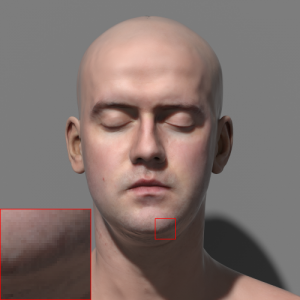
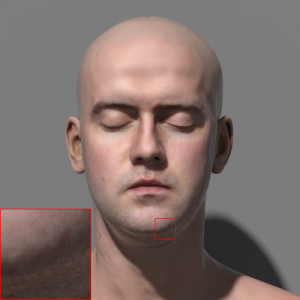
With and without denoiser. Credit: Lee Perry Smith scan
Guerilla Render includes an experimental denoiser and supports the InnoBright Altus denoiser
Learn more
Golaem

Golaem 4.3.2 is now available and compatible with Guerilla Render 1.4. Its new procedural rendering plugin for Guerilla Render is available on demand on Golaem website
Integrated in Autodesk Maya, Golaem makes it easy and affordable to populate worlds with directable digital characters, from a few to thousands. Artists from all over the globe use Golaem to bring life to commercials, episodic productions, feature films and games
Learn more
New displacement + bump mode
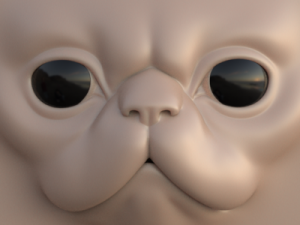
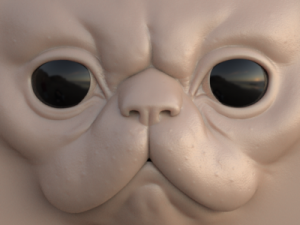
Without and with vector displacement. The model is rendered with only two steps of subdivision
Credit : Cedric Lepiller
Achieve the displacement or the vector displacement and the bump with a single texture.
Learn more
Archives
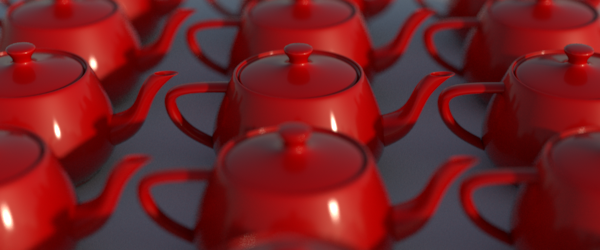
The Archives sample renders instances of an archive which contain a teapot and its shading and subdivison setup
An archive is a .rib file filled with static, ready to render, set of objects, lights and shaders. The objects include the overrides set by the RenderGraph at the time of the archive creation.
This workflow can be used to pack a large set of objects (like a large static set) in a single file and continue to work with a lightweight Guerilla project.
Learn more
Shader inspection

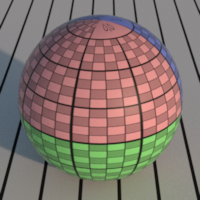
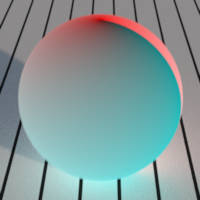
Click the Eye widget to see in render the shader in action!
For instance, inspect the st node to sneak peek the geo UVs instead of the texture
Learn more
New Hair shader
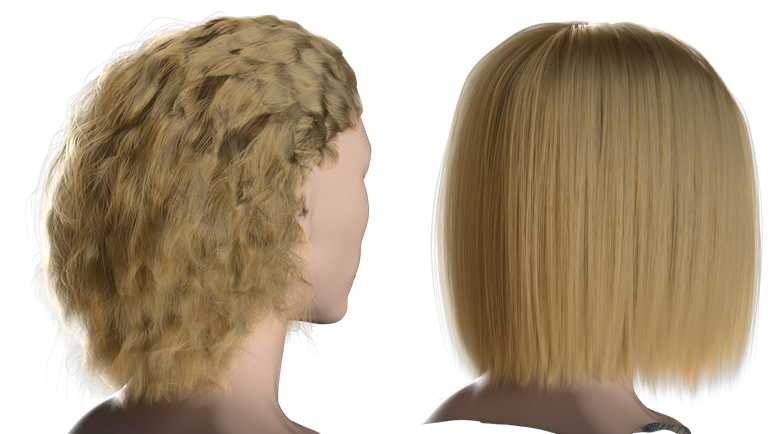
A new physically based yet artist controllable hair shader
Fast multiple scattering to simulate diffuse in light colored hair
Learn more
Flakes normal shading node
Antialiased flakes shader for car paints
Toon shader
Easily render outlines and cells
Better instances
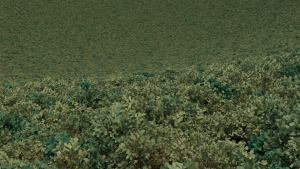

Pick instances in the viewport and in the render view
Override specific instances with the RenderGraph
Improved performances to fit even more objects in the scene
Massive number of lights

More than hundred of thousands of lights!
Cutoff threshold to reduce rendering time
Reduced memory footprint
Better geometry compression ratios
Less memory means more polys in your scenes!
XGen support for curves, instances and spheres
Support of the new Autodesk Maya' XGen procedural
Golaem Crowd
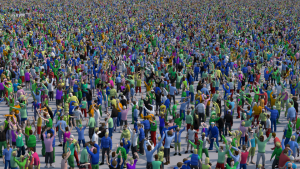
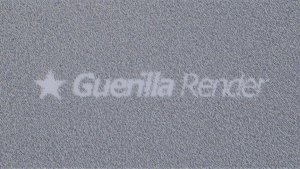
Support of the Golaem Crowd procedural
OpenColorIO
Support of OpenColorIO
New display LUTs
Motion blurred voxel fluids
Voxel velocity is now used to properly motion blur voxel fluids
NEW IN GUERILLA 1.3
Performances
Super fast opacity for transparent leaves, hairs, particles..
Global performances enhancement : faster, smaller, nicer.
Volumetrics
Raytrace all kind of volumetrics (Maya Fluid, OpenVDB, FumeFX, objects filled with volume, infinit volumes) using our easy to use Volume shader, including a black body model.
FX
Render all point cache file formats, (abc, bgeo, bin..) with any shape (points, streaks, blobbies, spheres, sprites..).
Introduce a dedicacted Particle shader.
Portals
Improve the render quality for indoor scenes.
Procedural geometry
Generate million of hairs, fur, grass.. using our new Procedural.
Use your Yeti(R) fur files directly in Guerilla.
Python scripting
All the Guerilla API is now scriptable in Python.
Documentation
Checkout the nice and up-to-date documentation.
Deep Image
Render OpenEXR 2.0 deep images.
New powerful shaders
Rough glass, Eye shader, Volume and Particles. As usual, versatile, ready and easy to use.
Image picker
Select, inspect, drag’n drop geometry directly in the Render View.
Lens shader
Introduce new programmable camera lens shaders (lens distortion, fisheye, latlong projection).
HTTP monitor
Monitor your render nodes in your web browser. Watch the rendering live. Use the JSON api.















